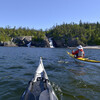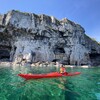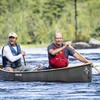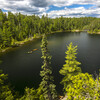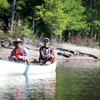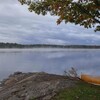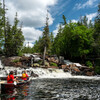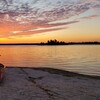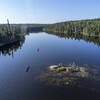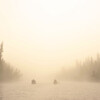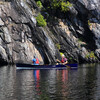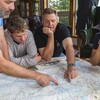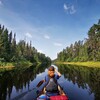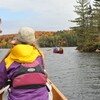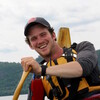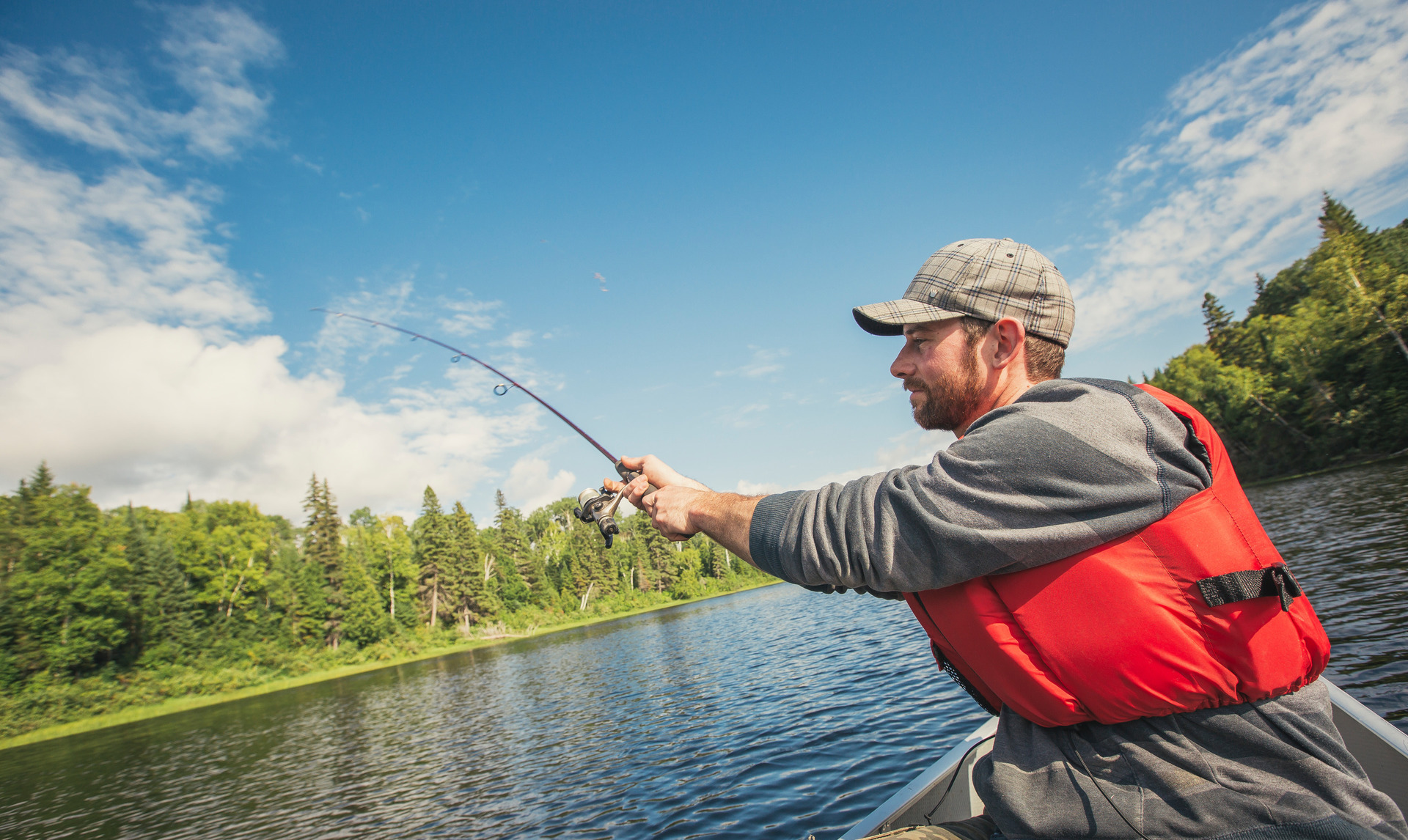
5 Best Fishing Destinations in Ontario Only Accessible by Paddle
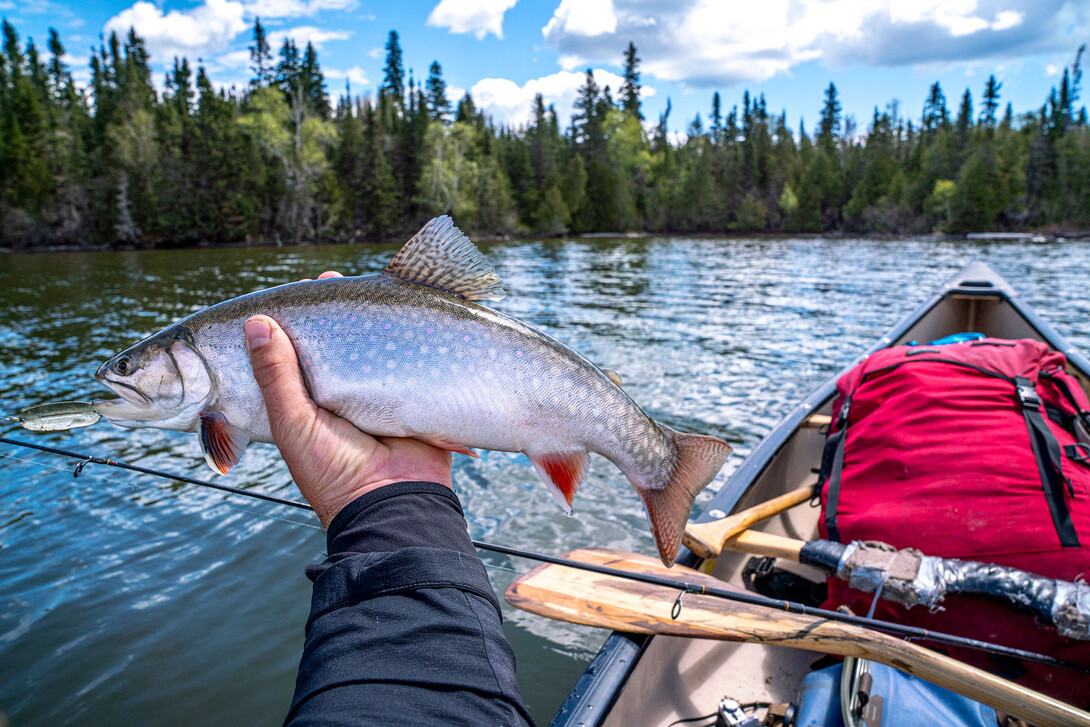
Ontario’s world-class fisheries offer exciting angling opportunities, especially for those who take the portage less travelled. The farther away from easy-access boat launches, the better the fishing generally is. Using canoes or kayaks for fishing allows you to go deeper into the wilds. It makes an adventure out of even shorter outings, and you’ll be surprised at how quiet the lates are just a short paddle from the launch. Not to mention, you’ll never run out of gas!
Following are some paddle-in fishing destinations that have options for base camp fishing, extended trips or lodge-based stays. Whether you’re after trophy fish or dinner, trout or walleye, the lakes await.
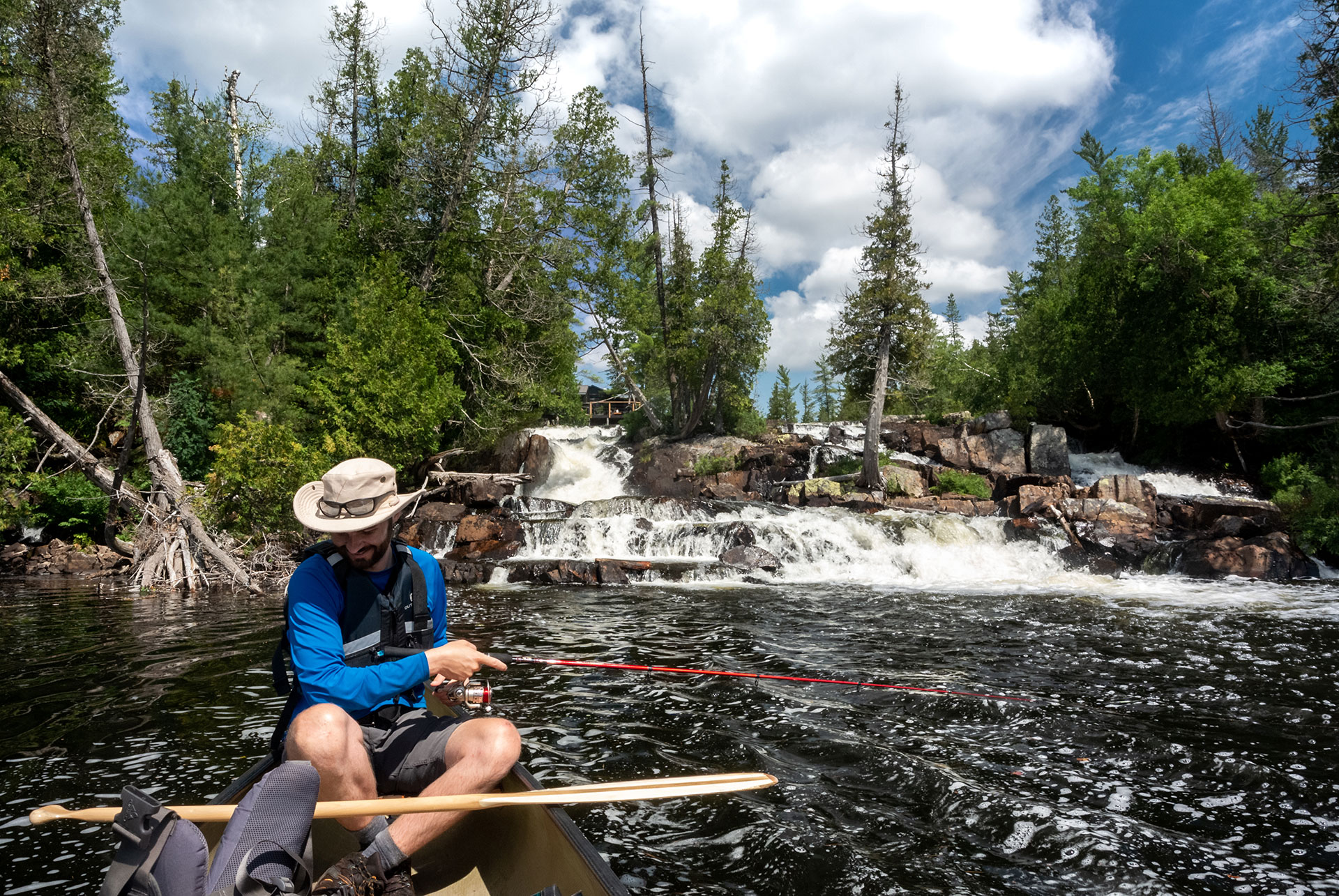
Temagami
Temagami offers wilderness within a half-day’s drive from Southern Ontario. The region centers around Lake Temagami, an expansive lake with over 1,200 islands to explore. The crowds drop off significantly with every portage away from the town of Temagami.
This region is the northern extent of Great Lakes-St Lawrence forest, with old-growth pine stands and exposed bedrock along the lakeshores. Nearly every type of fish can be caught throughout this area, with particularly great opportunities for northern pike, lake trout and brook trout.
With nearly 5,000 kilometres of shoreline, kayak tourers could have a great time on Lake Temagami alone. For those willing to portage, choose one of the 6 Best Canoe Routes in Temagami or create your own route. You can use this Guide to Canoeing in Temagami to plan your trip. Fishing is good year-round, but generally best in early summer or fall. Smallmouth bass, an excellent sport fish, are present in Lake Temagami and some of the smaller lakes surrounding it.
Temagami Outfitting Company, Temagami Outpost and Smoothwater Outfitters provide rentals, guided trips and accommodations. Floatplane providers can help trippers access deeper wilderness in less time. Lakeland Airways offers air service to lakes within the area. For a comfortable wilderness experience, book a stay at Cabin Falls Ecolodge, owned and operated by Hap and Andrea Wilson. It’s nestled within Lady Evelyn-Smoothwater Provincial Park but is only accessible by canoe or floatplane.
Lake Superior Provincial Park
The Big Lake is the main attraction at Lake Superior Provincial Park, where the jaw-dropping scenery and paddling and hiking options capture visitors' attention. Less known are the smaller lakes inland chock-full of cold-water trout species. The lakes contain brook trout, lake trout and the stocked hybrid splake. Mijinemungshing Lake is one of the largest inland lakes, with multiple bays, islands and shoals to explore. Take a few days and base camp on one of the many backcountry sites.
Gamitigama Lake is slightly smaller than Mijinemungshing but offers many connections through portages. It can also serve as a starting point for connecting to the stunning Old Woman Lake or Sand River.
The Fenton-Treeby canoe route is a great weekend trip, covering just 15 kilometres but featuring tidy campsites and great trout fishing. It’s a short drive from Wawa or the nearby Rabbit Blanket Lake campground. Plan your trip using this Guide to Canoe Tripping in Lake Superior Provincial Park.
Rent canoes through the Park or at Naturally Superior Adventures in Wawa.
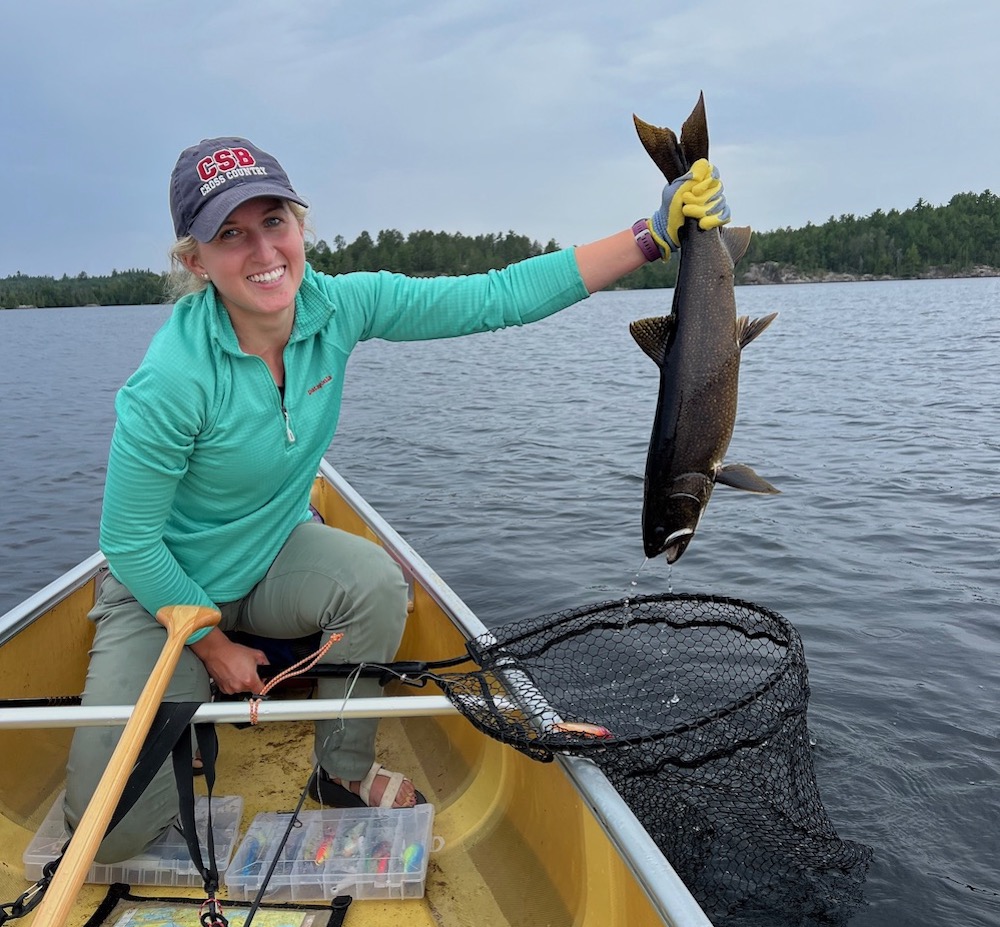
Quetico Provincial Park
Quetico Provincial Park is one of Northern Ontario’s most accessible and beginner-friendly wilderness parks. Several access points can be reached with a car rather than using a 4x4 to crawl down a precarious logging road. The portages are well maintained by the park rangers, and the plethora of lakes and rivers adds plenty of tripping options. Read about some of the best in this Guide to Quetico Canoe Routes. The Park gets quite busy, but as it is designated a wilderness park, there is no motorized boat traffic, unlike the adjacent Boundary Waters over the Canada-U.S. border.
Fishing in Quetico is great, with lakes holding walleye, northern pike and lake trout. Almost any lake presents a chance to catch fish, but the farther away from the access point, the less pressure the lakes will have. Quetico holds one of the highest concentrations of lake trout in the province, and they can be caught from a canoe all summer long. Generally they are found on larger, deeper lakes with clear water.
With such a phenomenal, relatively intact fishery, some restrictions exist to keep the fish populations healthy in Quetico: angling with barbed hooks or live bait is prohibited. Most fishing tackle has barbed hooks, which can be pinched down with pliers. Consult the fishing regulations for Management Zone 5 for the complete list, including catch limits.
Outfitters in Atikokan can help with route planning, shuttles and gear rentals. Check out our Guide to Quetico’s Best Canoe Trips for a full list of outfitters, guides and lodges.
Wabakimi Provincial Park
Wabakimi Provincial Park is one of the largest provincial parks in Ontario. This is a paradise for canoeing, with a lifetime of canoe routes accessible by floatplane, train or car. You can start planning your trip using our Guide to Canoeing & Kayaking in Wabakimi. For anglers, nearly every lake and river is full of fish that rarely see lures. Walleye are the most common fish in the Park, but select lakes also hold lake trout that can be caught year-round. Northern pike lurk in the shallow, weedy areas and make for fantastic eating. Generally, canoe fishing is best for walleye, either out of the boat or offshore. Look for ledges and steep drop-offs to cast jigheads or small spoons. Walleye make for excellent eating and are fun to catch.
There are options for river or lake trips in the Park depending on the paddler's skill and preference. The Flindt River is a great pool-and-drop river with portages around all the rapids, making it great for canoeists less inclined to run whitewater. Fishing is often fantastic at the bottom of these rapids where deep pockets form. Fishing is best in June and early July (often coinciding with peak bug season) but fish can be caught year-round with persistence and a bit of luck. With so few visitors to such a large area, there is very little fishing pressure on most of Wabakimi’s waterways.
The Friends of Wabakimi makes maps of popular canoe routes. This Park is designated as Wilderness Class, meaning many portages are only marked via traditional means like tree blazes. There is minimal campsite development, preserving the area’s wild feel. Guided trips can be arranged through Wabakimi Outfitters, which also offers rentals and accommodations pre- or post-trip.
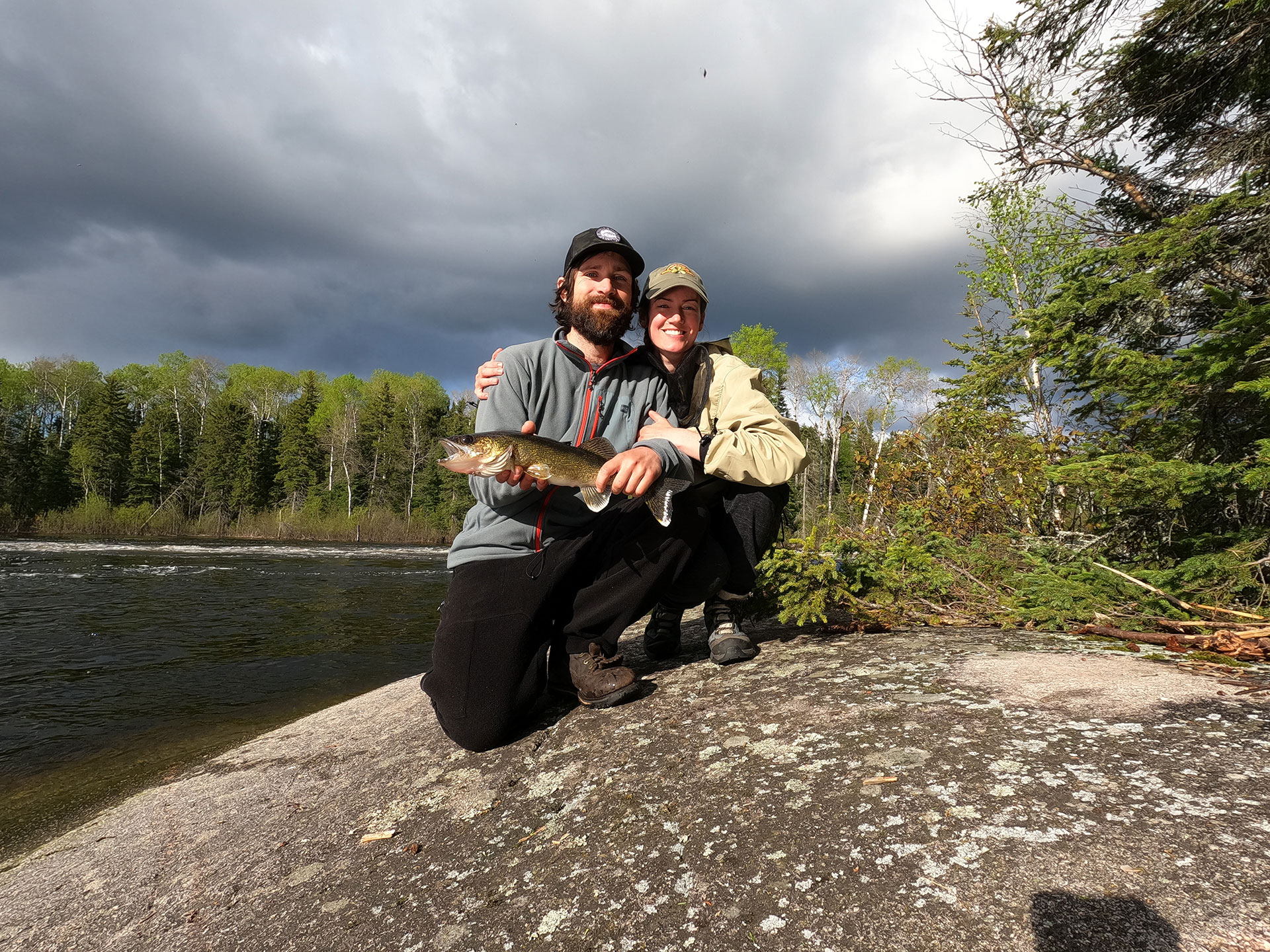
Woodland Caribou Provincial Park
This remote wilderness park is a bucket list destination for paddlers and anglers. Woodland Caribou Provincial Park is massive, spanning a larger area than the entire Greater Toronto Area. There are options in the Park for flatwater trips, or an extended trip along the legendary Bloodvein River, whose headwaters begin in Woodland Caribou before flowing westward to Lake Winnipeg. A trip down this river should be at least two weeks for full immersion. Blackfeather offers fully catered guided trips down the river.
The Park’s myriad lakes are also ideal for flatwater trippers. Start a trip in Red Lake and venture on a weeklong trip, or even longer. The summers here are hot and dry, but a trip in mid to late August will usually have the best balance of weather and fish action. Get planning using our Guide to Canoe Tripping in Wilderness Caribou Provincial Park.
Goldseekers Outfitting has operated in the Park for over 30 years and provides various services, including full or partial trip outfitting. For keen anglers, they offer a specific base camp fishing trip to the Park’s greatest honey holes for walleye, northern pike and lake trout. Don’t expect to see many other paddlers—the sprawling Park sees less than 1,000 visitors annually.
Recommended Articles
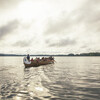
11 Indigenous-Owned Outdoor Adventure Companies in Ontario

Ultimate Paddling Day Trips
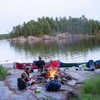
Best Sites on the French River
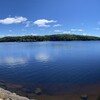
Woodland Caribou Canoe Trip
Temagami’s Prettiest Lakes

Level Up Your Paddling
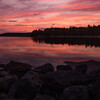
Must-Visit Lakes in Quetico
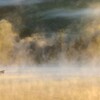
Paddling into the Past: Ontario Ghost Town Canoe and Kayak Routes
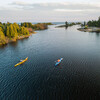
Philip Edward Island Camping Guide
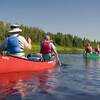
Missinaibi River Canoe Trip
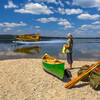
Best Fly-in Canoe Trips
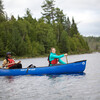
Bald Eagles, Herons & Moose
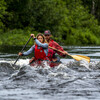
Guide to the Maukinak Trail
Historic Canoe Routes in Ontario
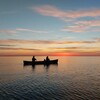
Lake Superior Park’s Prettiest Lakes

Pride, Confidence & Connection
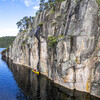
Guide to the Migizi & Iinoo Oowan Trails
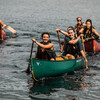
Trippers in Training: Ontario’s Best Canoe Camps
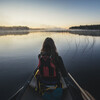
Ultimate Guide To Wabakimi
